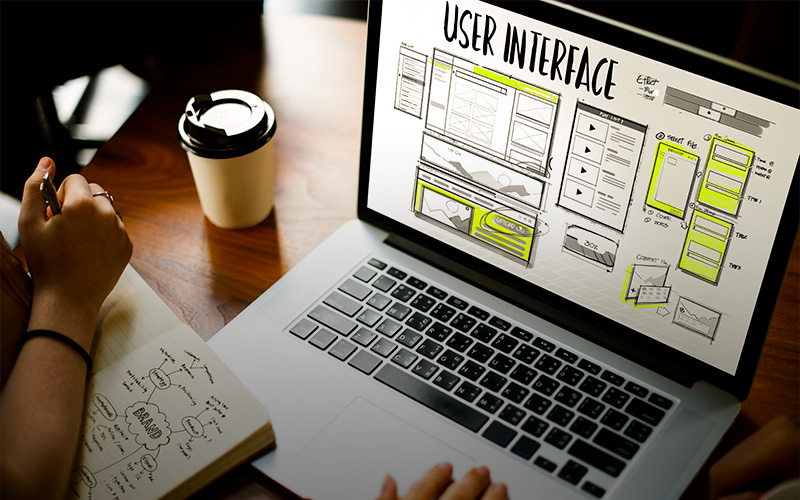In today’s competitive digital landscape, creating a successful mobile app goes far beyond just functionality. User Experience (UX) has emerged as a critical factor that can make or break an app’s success. This blog post explores why UX is crucial in app development and how it impacts user engagement, retention, and overall business success.
Why UX Matters in App Development
User experience encompasses all aspects of the end-user’s interaction with a company, its services, and its products. In the context of app development, UX focuses on creating intuitive, efficient, and enjoyable experiences for users. Here’s why it’s so important:
- First Impressions Count: Users form opinions about an app within seconds of launching it. A well-designed UX can captivate users from the start, encouraging them to explore further.
- User Retention: Apps with poor UX often face high abandonment rates. In fact, 25% of users abandon apps after just one use. Good UX keeps users coming back.
- Brand Perception: The quality of your app’s UX directly impacts how users perceive your brand. A seamless, intuitive experience builds trust and loyalty.
- Competitive Advantage: In a saturated app market, superior UX can set your app apart from competitors.
- Cost-Effectiveness: Investing in UX early in the development process can save significant costs down the line by reducing the need for major revisions post-launch.
Key UX Principles for App Development
To create an exceptional user experience, consider these fundamental principles:
Simplicity and Clarity
Keep your app’s interface clean and uncluttered. Users should be able to navigate and accomplish tasks with minimal effort. As the saying goes, “Simplicity is the ultimate sophistication.”
Consistency
Maintain consistency in design elements, navigation patterns, and interactions throughout the app. This helps users feel comfortable and reduces cognitive load.
Feedback and Response Time
Provide clear feedback for user actions and ensure quick response times. Users should always know what’s happening in the app, whether it’s a successful action or an error.
Accessibility
Design your app to be usable by people with various abilities. This not only expands your user base but also demonstrates social responsibility.
User-Centric Design
Understand your target users’ needs, preferences, and behaviors. Conduct user research and create personas to guide your design decisions.
App Development Trends Shaping UX in 2024
As we look ahead to 2024, several trends are influencing how developers approach UX:
- AI-Driven Personalization: Artificial Intelligence is enabling more personalized user experiences, tailoring content and interfaces to individual preferences.
- Voice User Interfaces (VUI): With the rise of voice-activated devices, integrating voice commands into apps is becoming increasingly important.
- Augmented Reality (AR) Integration: AR features are enhancing user engagement and providing unique interactive experiences within apps.
- Micro-interactions: Small, subtle animations and feedback mechanisms are being used to create more engaging and delightful user experiences.
- Dark Mode: Offering a dark mode option has become a standard feature, improving readability and reducing eye strain for users.
The App Development Process: Integrating UX
To effectively incorporate UX into your app development process, consider the following steps:
- Research and Planning: Conduct user research, create personas, and define your app’s goals and features.
- Wireframing and Prototyping: Create low-fidelity wireframes to map out the app’s structure and flow. Develop interactive prototypes for testing.
- User Testing: Conduct usability tests with real users to gather feedback and identify areas for improvement.
- Visual Design: Develop a visually appealing interface that aligns with your brand and enhances usability.
- Development: Work closely with developers to ensure the UX vision is accurately implemented.
- Launch and Iteration: After launch, continuously gather user feedback and make iterative improvements to the UX.
The Cost of Good UX
- While investing in UX design may increase initial development costs, it often leads to long-term savings and increased revenue. A well-designed UX can:
- Reduce development time by identifying and solving issues early
- Decrease customer support costs by creating more intuitive interfaces
- Increase user retention and engagement, leading to higher revenue
- Enhance brand reputation, attracting more users and potential investors
Choosing the Right App Development Framework
Selecting an appropriate development framework can significantly impact your ability to create a great UX. Popular frameworks like React Native, Flutter, and Xamarin offer robust tools for creating cross-platform apps with consistent user experiences.
When choosing a framework, consider factors such as:
- Performance capabilities
- UI component libraries
- Community support and resources
- Compatibility with your target platforms
Conclusion
In the ever-evolving world of app development, user experience has become a key differentiator. By prioritizing UX in your app development process, you can create products that not only meet user needs but also delight and engage them. Remember, a great user experience is not just about aesthetics; it’s about creating an intuitive, efficient, and enjoyable journey for your users.
As we move into 2024 and beyond, staying attuned to emerging UX trends and continuously refining your app based on user feedback will be crucial for success. By investing in UX, you’re not just building an app; you’re crafting experiences that users will love and remember.


